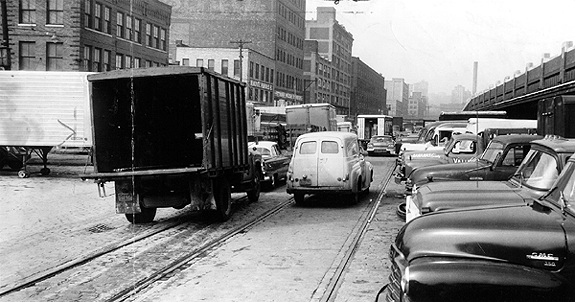

The Strip District's got character. It's the kind of place that's seen hard use and can handle it. You can sense what The Strip must have been like back when: rugged, purposeful. All these old warehouses and factories and alleyways. Today it appears tamer than it must have once been. Not as many people live in The Strip as used to. At one time it teemed with immigrant workers and their families. It was seen as a "problem." Once a violent neighborhood, gangs were not uncommon. But, there was a thriving Boys' Club (before it moved up to Lawrenceville) and, before the days of indoor plumbing, a public bath. Churches were social anchors in The Strip, particularly old St. Patrick's which was the parish church of Father Cox who led the Hunger March on Washington in the 1930s. And though you wouldn't know it now, across the street from St. Patrick's was a Shantytown where the unemployed set up their shacks.
Mills and foundries filled The Strip and, during the Civil War produced equipment for the Union forces--including the 80 ton Rodman Gun. And, though The Strip has been turning fashionable lately--with restaurants and clubs--it still serves as Pittsburgh's produce distribution center and is every bit as colorful as street markets are supposed to be. There's fresh food, exotic ingredients and all kinds of unusual items to fire the imagination. It's old time shopping like used to be at the Diamond Market Downtown or at the old market on the Northside; and it's a draw.